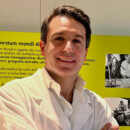Arsbiomedica operates a highly specialized diabetology center structured to address all user needs with a multidisciplinary approach.
Diabetes Mellitus: Overview
Diabetes mellitus is a chronic disease characterized by an excess of sugars (glucose) in the blood, known as hyperglycemia. It is divided into two main forms: type 1 diabetes and type 2 diabetes.
What is Diabetes?
Hyperglycemia can be caused by insufficient insulin production (the hormone that regulates blood glucose levels) or by inadequate insulin action.
Type 1 diabetes is characterized by a total absence of insulin secretion, while type 2 diabetes is determined by reduced sensitivity of the body to insulin, normally produced by target tissues (liver, muscle, and adipose tissue), and/or by reduced insulin secretion from the pancreas (by beta cells). It can progressively worsen over time and develops on the basis of a pre-existing condition of insulin resistance.
Type 2 diabetes is a highly prevalent disease worldwide, and its prevalence is continuously increasing.
There are also other forms of diabetes related to genetic defects in beta cell function or insulin action, diseases of the exocrine pancreas, induced by drugs or chemicals, and “gestational” diabetes that can occur during pregnancy.
What Causes Diabetes?
Among the causes of the disease, an interaction between genetic factors (family history) and environmental factors (sedentary lifestyle, dietary habits, and other risk factors such as high blood pressure, dyslipidemia, smoking) is recognized.
What are the Symptoms of Diabetes?
Often, the presence of hyperglycemia does not give any symptoms or signs, which is why diabetes is considered a insidious disease. Sometimes symptoms appear when the disease has already been present for years. The classic symptoms, in acute cases, include fatigue, increased thirst (polydipsia), increased urination (polyuria), unexplained weight loss, sometimes even accompanied by increased appetite, discomfort, abdominal pain, and in severe cases, mental confusion and loss of consciousness.
The constant presence of blood glucose values above normal increases the risk of macrovascular and microvascular complications (damage to blood vessels). The major complications resulting from diabetes can cause various damages to the patient, which are divided into:
Neurological (neuropathy): anatomical and functional alteration of the central nervous system, peripheral and voluntary, sensory deficits, motor, visual, auditory.
Renal (nephropathy): damage to the filtering structures of the kidney (glomeruli and renal tubules) that can lead in extreme cases to dialysis (in Italy 30% of patients on dialysis therapy are diabetic).
Ocular (retinopathy): caused by chronic hyperglycemia and hypertension leading to alteration of blood vessels with consequent worsening of vision up to blindness.
Cardio-cerebrovascular: myocardial infarction or ischemic heart disease, cerebral stroke.
Diagnosis
To diagnose diabetes, a blood test is necessary.
The disease is detected when there are 2 fasting blood glucose (FPG) values greater than 126 mg/dl on 2 different days, or when the value of glycated hemoglobin is > 6.5% and is confirmed in a subsequent withdrawal (at least 3 months later), or when a random value > 200 mg/dl is detected in the presence of some symptoms (polyuria, polydipsia, confusion, visual alterations or others).
Treatment
A correct diet and constant physical activity represent the cornerstone of diabetic disease treatment.
Insulin therapy is inevitable for the treatment of type 1 diabetes. Thanks to this therapy and a correct lifestyle, most patients manage to lead a normal life and prevent the onset of long-term complications of the disease.
Type 2 diabetes involves different treatments compared to insulin therapy. Currently, there is no valid drug for all patients with type 2 diabetes, which is why it is necessary, for each individual patient, to build an individual therapy based on different clinical situations and personal characteristics.
Prevention
Interventions to improve lifestyle, including moderate-intensity aerobic physical activity and proper nutrition. Screening, aimed at identifying the pathology even in asymptomatic subjects, is generally recommended for the entire population, as it is a simple blood test (fasting blood glucose). However, there are individuals at higher risk who must constantly monitor their blood glucose level, especially overweight individuals and those with first-degree family history of type 2 diabetes.
Trust our professionals
Contact
Request Information
Do you need a medical visit or an exam?
Choose the best care for yourself
Choose the best care for yourself





